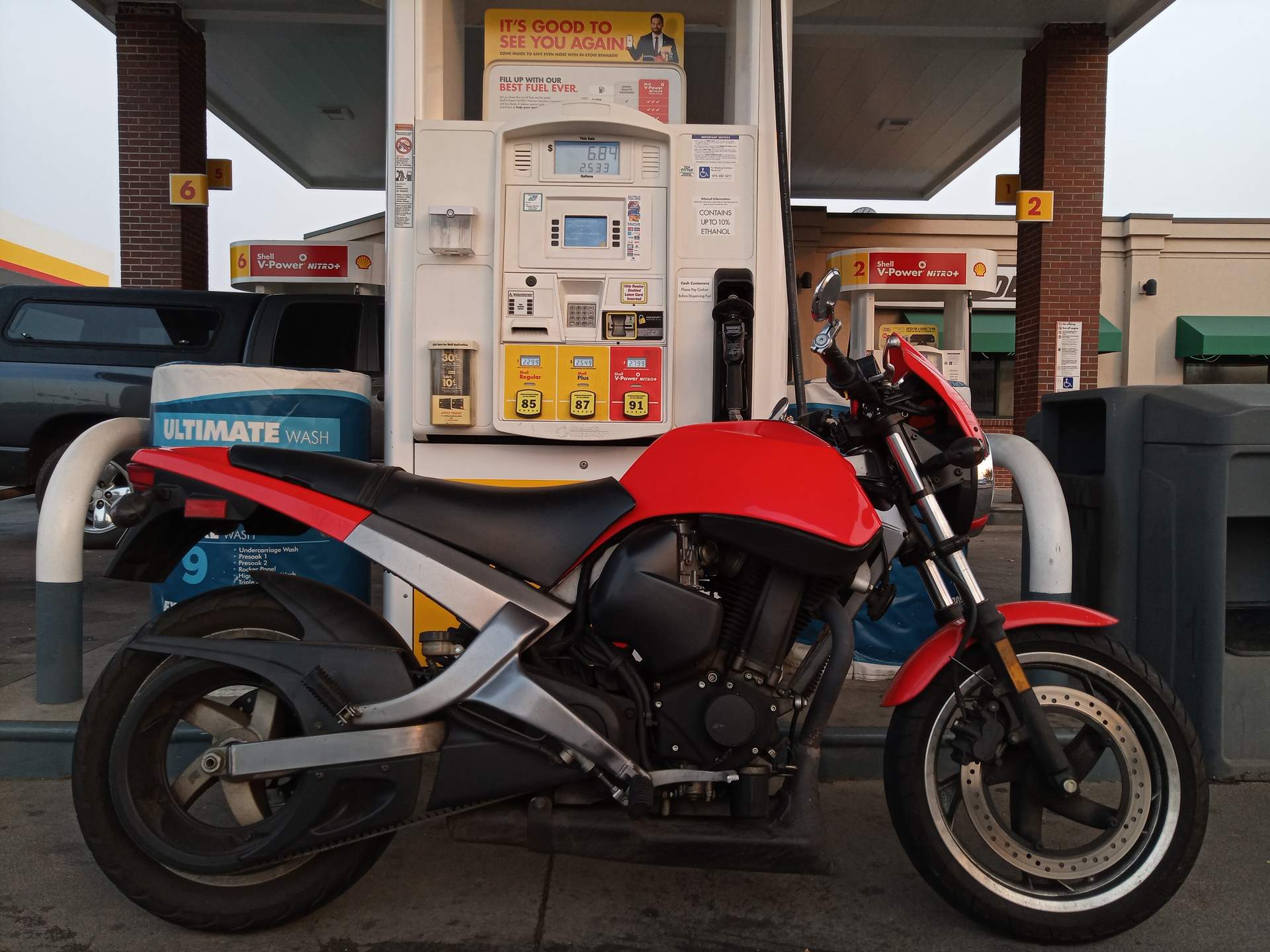What every motorcyclist needs to know about E10 petrol

Since September 2021, you might have noticed a change in the options available to you when going to fill up your bike with petrol. Standard premium unleaded petrol has changed from containing 5% of ethanol to 10% (E10).
Some drivers are concerned at the change, saying it reduces mileage and even damages their bike, others consider it part of the evolution of motorbiking. Here the experts at Bikesure separate the fact from the fiction about E10 fuel.
E10 roll-out aimed at cutting emissions
The aim of E10 petrol is to reduce carbon emissions. It uses bioethanol, which is derived from plant crops and other organic materials rather than distilled from crude oil like standard petrol. Its primary function is not as a fuel, but as an anti-knocking agent.
The previous 5% mix was estimated to reduce the amount of CO2 emissions from vehicles by around 880,000 tonnes a year, while taking it up to 10% could increase that amount by another 750,000 tonnes (give or take a few tens of thousands).
This sounds like a lot, until you know that the total CO2 emissions from transport in the UK is around 120 megatonnes. So 750,000 tonnes is not nothing, but it’s not much, and the production of bioethanol has its own CO2 costs built in on the planting, growing and harvesting side. And that’s not forgetting the impact of fertilisers and chemicals required by modern crop farming.
While the importance of reducing the carbon emissions of UK vehicles by a fraction of a percent is an issue best left to the experts to debate, it’s easier to quantify the potential problems the new fuel mix can cause for motorcycles.

The impact of E10 on older motorcycles
The main issue with E10 fuel and motorcycles is how it impacts older models. Higher concentrations of ethanol can cause some of the material used in some older engines to corrode. It does this in a couple of ways.
Firstly, ethanol can absorb and concentrate water molecules from the surrounding air, allowing water to form in parts of the motorcycle where you don’t want it to. Secondly, as a solvent, ethanol can melt rubber, plastic and fibreglass over time.
This is obviously less than ideal if you’re a regular user of classic motorcycles, as adding “fuel disintegrates motorcycle” to the list of things you need to watch out for to keep your pride and joy in good working order will make that task more difficult.
This doesn’t mean an instant death sentence for any classic motorcycle that’s had a few tanks of E10 run through it. However, if you do own a motorcycle with components at risk of corrosion then there are a few solutions you should consider to guarantee its long-term health.
Maintaining your bike’s long term health
Replacing the vulnerable parts is a good approach, but one that might not appeal to some hardcore collectors. Once you start replacing parts on a classic bike, it stops being that exact bike. It’s a real ‘Trigger’s Broom’ scenario if you’re aiming to keep something in its original condition. If you want to keep your bike at its original spec, then there are fuel additives that you can buy that help to protect against the damaging effects of ethanol.
The third, and simplest, solution is to keep filling your bike with E5 petrol, although as this is due to be taken off the market in 2026, you’ll still have to think of a long-term solution eventually.
So how can you tell whether your motorbike will be affected by this new fuel? The general rule of thumb is the newer it is, the less likely it is to have a problem with E10, and anything made after 2011 should be OK. There are also manufacturers who claim their older models can handle it fine. For example, Triumph says that anything made after 1980 is OK with E10, while any machine Honda has produced since 1993 is, according to the manufacturer, also ready to go.
So which fuel should I use in my bike?
There’re a few ways of identifying what fuel your bike can use. Newer bikes will have a sticker on the tank telling you, so unless you took it off without taking a note of what it said, then that’s the easiest way.
If the sticker’s not there, the government provides information about most manufacturers. Like any government IT project, it’s not perfect, and there are a few vague answers here and there that might require checking with the manufacturers or dealers.
Luckily, most manufacturers seem to have been on the ball, with a lot of them giving their entire range the all clear, like Triumph and Honda. Looking at the manufacturers represented on the list, the ones with the most potential for newer bikes to have issues with E10 are Ducati and Kawasaki. If you own either of those you should definitely confirm that your bike is compatible.
The main thing to remember is that you don’t need to panic. If you’ve already filled up with E10 petrol and you discover your bike isn’t compatible, it’s not the end of the world. The damage takes a good while to develop, so it should be easy to limit it by refilling with E5 instead, perhaps with some of the previously mentioned fuel additives if you’re really concerned.

Advice for when your bike is laid-up
If you’re planning on not using your bike over a period of time, for example over winter, then you should drain the fuel tank and engine to stop the water concentration effect from kicking in.
With the importance of swift action to reduce carbon emissions hopefully taking on some urgency, we are likely to see further changes to the ways we fuel our chosen methods of transport.
Many other countries use fuel with even higher percentages of ethanol. While this is one way to reduce our reliance on burning oil products, the real change will be the switch to electric powered vehicles. But until we finally get the breakthrough in battery technology that makes electric motorcycles a true replacement for their internally combusting siblings, you can rest assured that the new options on the garage forecourts aren’t going to destroy your motorcycle. And that’s the most important thing.
Whatever you ride and however it’s fuelled, Bikesure will have a competitively-priced motorcycle insurance policy to match your needs. Call 0330 123 1028 for a swift no obligation quote, or visit the Bikesure website.
Motorbikes






